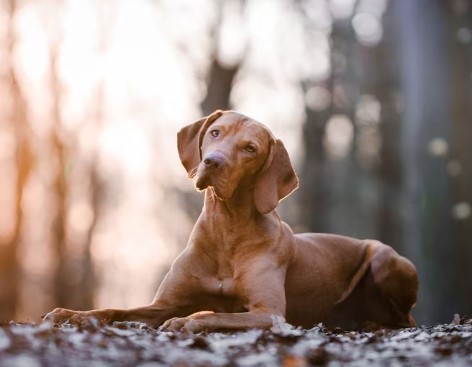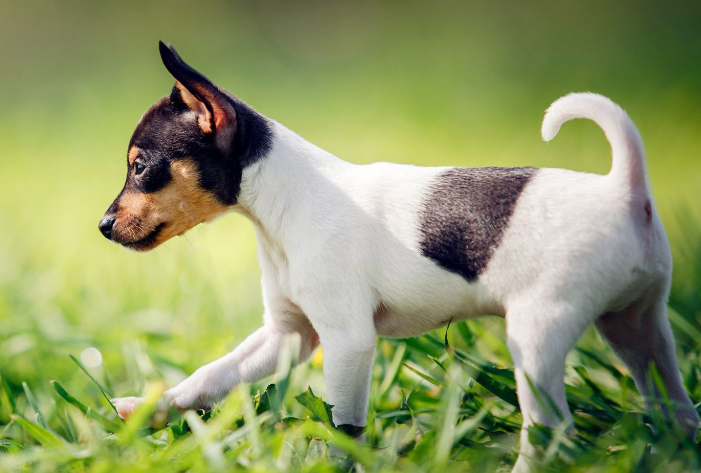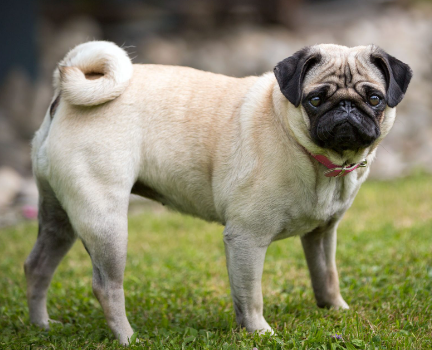The Vizsla Dog, often known simply as the Hungarian Vizsla, stands out as a breed recognized for its grace, intellect, and boundless enthusiasm. Originating in Hungary, these dogs boast a storied past as adaptable hunting companions. Their sleek, short rust-colored coat is visually striking, complemented by expressive eyes and endearing floppy ears.
More than just their physical allure, enthusiasts admire Vizslas for their affectionate and steadfast nature. Often labeled as “Velcro dogs,” they form close bonds with their human families, thriving on companionship and eager to please. This innate intelligence and eagerness to learn make them well-suited for various tasks, from hunting to search and rescue missions, as well as excelling in dog sports. Given their high energy levels, Vizslas require ample exercise and mental stimulation to maintain contentment and good behavior.
Vizsla Dog HEIGHT
22-24 inches (male)
21-23 inches (female)
Vizsla Dog WEIGHT
55-60 pounds (male)
44-55 pounds (female)
Vizsla Dog Lifespan
12 to 14 Years
Vizsla Dog Colors
An eye-catching reddish-gold colouring
History of Vizsla Dog

The earliest documented mention of the Vizsla dog breed dates back to 1357, as recorded in the Illustrated Vienna Chronicle commissioned by King Louis I of Hungary and compiled by the Carmelite Friars.
Throughout history, the Vizsla has endured significant challenges, including the Turkish occupation (1526–1696), the Hungarian Revolution of 1848, the tumult of both World War I and World War II, and the Hungarian People’s Republic era.
Despite these trials, the Vizsla faced near-extinction on multiple occasions. In the 1800s, they were nearly overrun by English Pointers and German Shorthaired Pointers. After World War II, their numbers dwindled to a mere handful, with only around a dozen of the true type remaining in Hungary.
However, from this scant population, the breed experienced a remarkable resurgence. Various strains of the Vizsla emerged as breeders selectively bred individuals to suit different hunting styles. Beyond Hungary, Vizslas were also bred in Romania, Austria, Slovakia, and Serbia.
Following World War II, the Vizsla began to gain traction in the United States. As interest in the breed grew, enthusiasts formed the Vizsla Club of America to pursue American Kennel Club (AKC) recognition. Thanks to the registration of foundation stock with the AKC, the Vizsla achieved official recognition on November 25, 1960, becoming the 115th breed acknowledged by the American Kennel Club.
The Vizsla played a crucial role in developing other breeds, notably the Weimaraner, Wirehaired Vizsla, and German Shorthaired Pointer. There is ongoing speculation about using these breeds, alongside others in the pointer category, to re-establish the Vizsla breed towards the end of the 19th century.
Vizsla Dog Appearance
The Vizsla distinguishes itself with its sleek red coat, often described as golden red or russet, a hue that extends to the nose and the skin around the eyes. Complementing their striking coat are long, silky ears and a lean physique, perfectly proportioned for their size.
Female Vizslas typically weigh between 44 to 55 pounds, while males are larger, reaching up to 65 pounds. Their appearance can be intense and razor-focused when engaged in the hunt, yet at home, they reveal their sensitive and affectionate nature, showcasing their loving side.
Vizsla Dog Temperament

The Vizsla Dog has earned the moniker “versatile Vizsla” and “Velcro Vizsla” for its penchant for shadowing its owner around the home, seeking attention and affection at every turn. Forget about solitary bathroom breaks—this breed is notorious for sticking close, ensuring constant companionship. Whether at rest or play, they’re often found leaning against you or resting at your feet, eager for closeness.
In addition to their clingy tendencies, Vizslas are also vocal communicators, expressing themselves through whines, moans, and other sounds to share their thoughts. With a strong work ethic ingrained in their nature, they eagerly embrace tasks within the family dynamic.
If Vizslas were high school students, they’d fit in seamlessly with both the athletic and intellectual crowds. Highly intelligent and responsive to training, they thrive on mental stimulation but can become restless without enough activity. Their boundless energy makes them ideal jogging partners, with the Vizsla Club of America stressing the importance of daily exercise to keep them content.
These dogs show remarkable aptitude for hunting from a young age, displaying pointing and retrieving skills before their first birthday. Versatile in their hunting abilities, they excel on both land and water, remaining close to their handler and utilizing their sharp senses to track prey. Beyond hunting, their keen nose and strong memory make them well-suited for roles such as watchdogs, guide dogs, drug-detection dogs, therapy dogs, and search-and-rescue dogs.
Vizsla Dog Personality
Vizslas are known for their active nature, stemming from their heritage as hunting dogs. Unlike some breeds, they don’t thrive in kennel environments and much prefer the company of their owners. Their high level of intelligence means they require mental stimulation and physical activity to prevent undesirable behaviors like chewing and digging.
RELATED POST:
Vizslan Dog Health
Another appealing aspect of the Vizsla Dog breed is their generally robust health, as noted by the Vizsla Club of America (VCA). While they typically don’t encounter many health issues, there are some potential conditions they may be susceptible to, including epilepsy, hip dysplasia, hypothyroidism, lymphosarcoma (the third-most common cancer in dogs), and progressive retinal atrophy.
Responsible Vizsla breeders adhere to health standards by conducting all recommended health tests outlined by the Orthopedic Foundation for Animals (OFA). For those adopting a Vizsla Dog, it’s advisable to request comprehensive health information from the rescue organization. On average, Vizslas have a lifespan of 12 to 15 years.
Vizsla Dog Care

Due to their short and smooth coat, Vizslas are relatively low-maintenance when it comes to grooming. While they do shed, regular brushing with a rubber grooming brush helps keep loose hairs under control, particularly important for keeping those distinctive red hairs off your darker clothing. Periodically wiping them down with a damp cloth helps maintain cleanliness, with a full bath typically required only four to five times a year. Despite their hunting background, Vizslas are naturally inclined to stay clean, readily shaking off water and engaging in self-grooming habits.
Exercise
Exercise plays a crucial role in maintaining the well-being of Vizslas. They thrive on ample physical activity, requiring around 30 to 60 minutes daily. Engaging in a variety of activities such as canine sports, therapy work, long walks, runs, and games of fetch keeps them mentally stimulated and physically satisfied. Without sufficient exercise, Vizslas may develop undesirable behaviors, including excessive chewing due to their retriever instincts. Providing a variety of chew toys, regularly rotated to keep them interesting, helps redirect this behavior away from furniture.
Positive reinforcement is essential for effectively training Vizslas. With their soft-natured disposition, they respond best to gentle and consistent methods. Offering praise and rewards while maintaining a kind and patient approach fosters a strong bond and encourages desired behaviors.
FAQ
What were Vizslas originally bred for?
The Vizsla breed likely traces its roots back to 8th-century Hungarian hunting dogs. Historical depictions show them alongside hunters and falcons, indicating their role in hunting. Over time, they transitioned from companions of early warlords and barons to cherished pets of Hungarian nobility. Following World War II, Vizslas began to gain popularity in the United States, where they continued to be valued as skilled hunting partners, graceful athletes, and devoted family members.
What is the average lifespan of Vizslas?
Vizslas typically live between 10 to 14 years.
How much do Vizsla puppies cost?
The price of a Vizsla puppy typically ranges from $1,000 to $1,800, depending on various factors such as lineage, location, and breeder reputation. Prospective pet owners should also consider additional expenses, including veterinary care, training, and food.
How big do Vizslas grow?
Vizslas are medium-to-large-sized dogs, standing approximately 22 to 24 inches tall at the shoulder. As with many breeds, females tend to be smaller than males.











